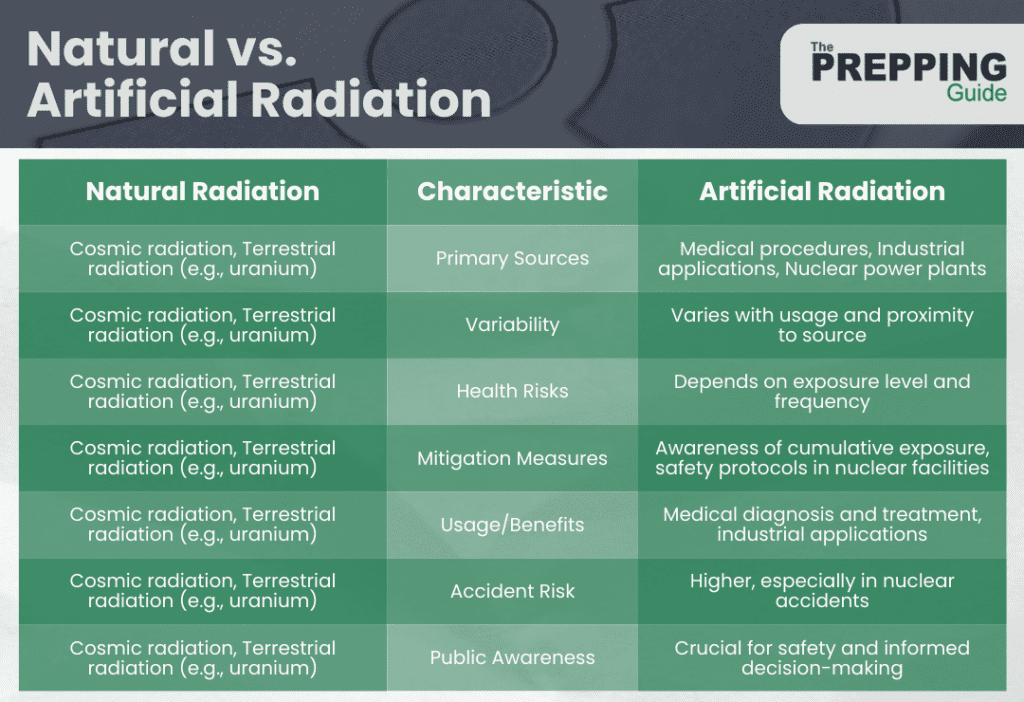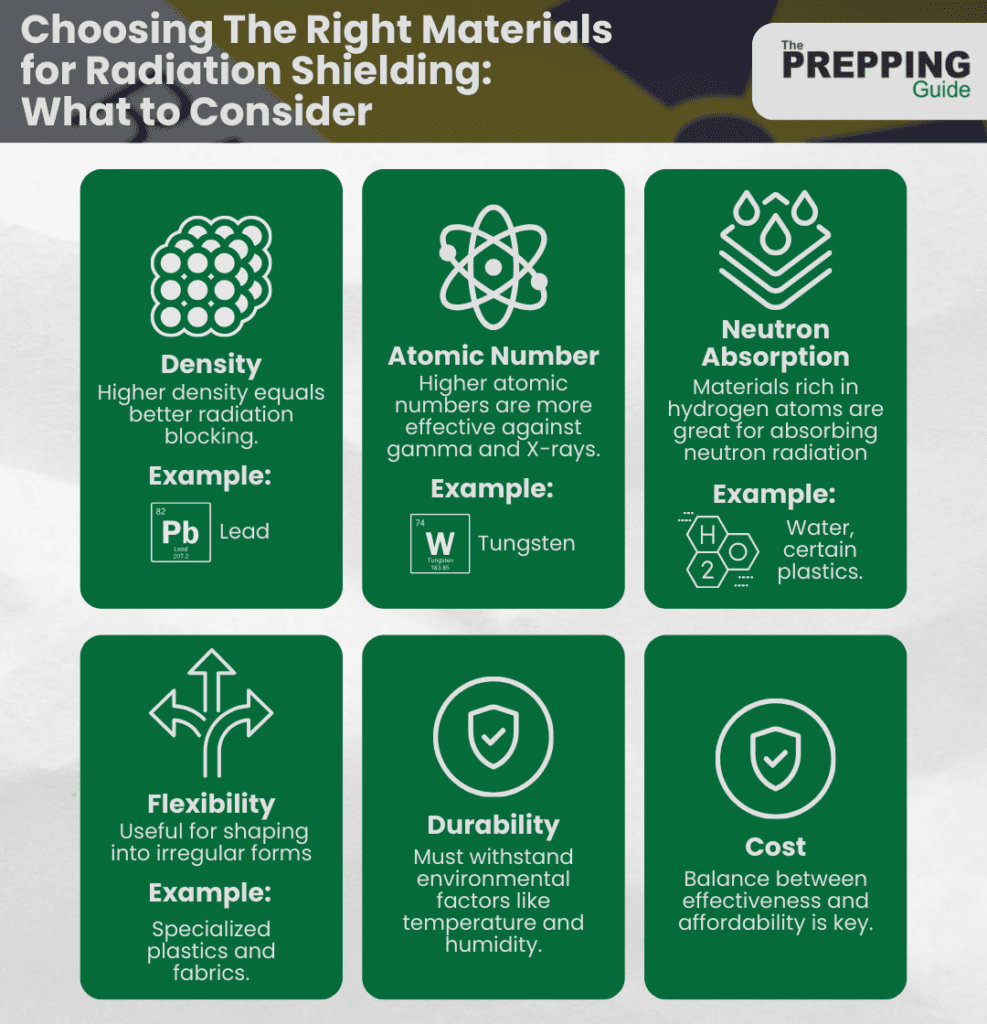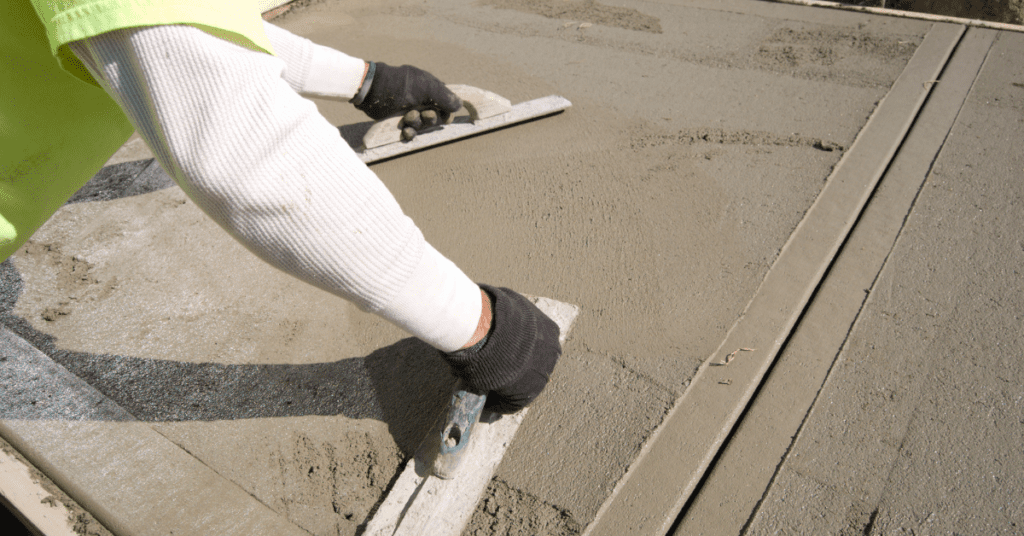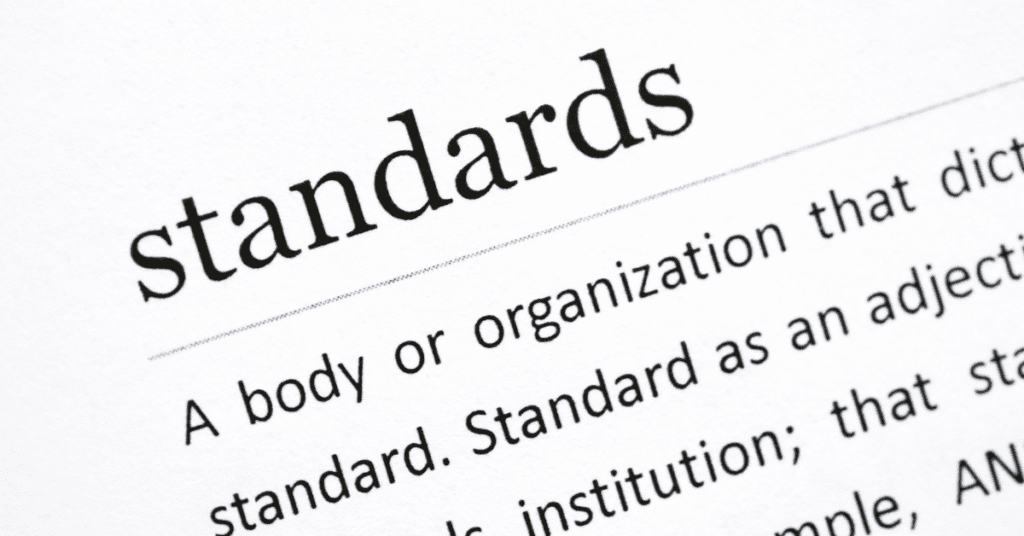Navigating the world of radiation safety can be daunting, especially when considering what materials protect against nuclear radiation. This article delves into the various materials and methods that offer protection, providing you with essential knowledge and peace of mind.
Materials that protect against nuclear radiation include lead, concrete, barium sulfate, water, borated polyethylene, and tungsten. These materials differ in properties like density, atomic number, and neutron absorption capabilities, making them effective in shielding against different types of radiation.
Curious to learn more? As you read on, you’ll discover the unique characteristics of each material and understand why they are chosen for specific radiation protection purposes.
Sources of Nuclear Radiation
Nuclear radiation surrounds us, stemming from both natural and artificial sources. It’s important for you to recognize these sources, as they play a pivotal role in determining the necessary protective measures.

Let’s take a closer look at both natural and man-made origins to better understand where nuclear radiation comes from.
Understanding Natural Radiation Sources
Natural radiation is an inescapable part of our environment, and you need to understand its two primary sources: cosmic radiation and terrestrial radiation.
Cosmic radiation is the stream of high-energy particles coming from outer space, which varies in intensity depending on your altitude and latitude. Terrestrial radiation, on the other hand, comes from radioactive materials in the Earth, like uranium, thorium, and radium. These elements are present in varying amounts in the soil and rocks, contributing to background radiation levels that differ from one location to another.
While natural radiation typically remains at safe levels, it can increase in certain situations. For example, radon gas, a product of uranium decay, can accumulate in poorly ventilated homes, potentially elevating radiation exposure. You need to be aware of these variations, especially if you live in areas with higher natural radiation levels or plan to travel to such regions. Simple measures, like radon testing in homes, can significantly mitigate these risks.
Artificial Radiation: Human-Made Sources
Artificial sources of radiation, which are primarily the result of human activities, include medical procedures, industrial applications, and nuclear power generation. Medical procedures, such as X-rays and CT scans, use radiation to diagnose and treat various health conditions. While these procedures provide significant health benefits, you must be aware of their cumulative exposure. In industrial settings, radiation is often used in non-destructive testing and material analysis.
Nuclear power plants, while a significant source of clean energy, can also be a source of radiation exposure, particularly in the event of an accident. If you live near a nuclear facility, it’s important to be informed about the safety measures and emergency procedures in place. Understanding these artificial sources and their potential risks enables you to make more informed decisions about your exposure in everyday life and in professional environments.
Health Effects of Nuclear Radiation Exposure
Exposure to nuclear radiation can have varying effects on your health, depending on the intensity and duration.
After numerous years of extensive research, the effects of radiation on health are now thoroughly understood. In its 2016 report, the United Nations Environment Programme (UNEP) observed:
“We know more about the sources and effects of exposure to [ionizing] radiation than to almost any other hazardous agent, and the scientific community is constantly updating and analyzing its knowledge… The sources of radiation causing the greatest exposure of the general public are not necessarily those that attract the most attention.”
You need to be aware of these effects, whether they’re immediate or develop over time. Let’s explore the acute and chronic impacts, including radiation sickness and long-term consequences.
Immediate Health Impacts of Radiation Exposure
When exposed to high levels of radiation, either accidentally or in a medical setting, the body can react almost immediately. Symptoms of acute radiation exposure, such as nausea, vomiting, and fatigue, are your body’s immediate response to this unnatural level of exposure. These symptoms are often accompanied by skin redness or burns, depending on the intensity and duration of the exposure.
You need to seek immediate medical attention if you suspect you’ve been exposed to high levels of radiation. A quick response can significantly reduce the severity of the symptoms and the long-term health effects. Healthcare professionals can provide treatments that limit radiation absorption and assist in recovery, highlighting the importance of prompt medical intervention in these situations.
Chronic Health Risks from Prolonged Radiation

Prolonged exposure to lower levels of radiation can also pose significant health risks over time. This type of exposure can lead to the development of chronic health conditions, most notably cancer. Radiation can damage the DNA in your cells, leading to mutations that sometimes result in cancer. Other potential chronic effects include cataracts, cardiovascular disease, and fertility issues.
You need to be aware of your environment and the potential sources of ongoing radiation exposure. This is particularly important if you work in industries where radiation is used, or if you live in areas with higher-than-average natural background radiation. Taking steps to minimize your exposure, such as wearing protective gear or improving ventilation to reduce radon levels, can significantly lower these long-term risks.
Recognizing Symptoms of Radiation Sickness
Radiation sickness, also known as acute radiation syndrome, is a serious condition that occurs after exposure to a large dose of radiation, usually over a short period. The severity of the sickness depends on the amount of radiation absorbed by your body.
Early symptoms include nausea, vomiting, and a loss of appetite, followed by more severe symptoms like hair loss, bleeding, and skin burns. In extreme cases, exposure to a high dose of radiation can lead to organ failure and death.
If you’re in a situation where radiation exposure is a possibility, such as a nuclear accident or a radiation emergency, being able to recognize these symptoms can be critical. Quick identification of radiation sickness is key to seeking prompt medical care, which can improve the chances of recovery. It’s also important to be aware of the potential for delayed symptoms, as radiation sickness can sometimes take time to manifest.
Exploring Long-term Effects of Radiation on Health
The long-term effects of radiation exposure can be subtle and may not become apparent for many years. One of the most significant long-term risks is the development of cancer. Radiation exposure increases the likelihood of developing various types of cancer, including leukemia, thyroid cancer, breast cancer, lung cancer, and skin cancer. The risk of cancer depends on several factors, including the dose of radiation received and the age at exposure.
Apart from cancer, long-term radiation exposure can also lead to genetic mutations and hereditary effects. These effects might not be evident in the individual exposed but can appear in future generations. For those who are frequently exposed to radiation, whether through occupation or medical treatments, monitoring and managing exposure levels are crucial for minimizing these long-term risks. Understanding these potential long-term effects empowers you to take proactive steps in protecting your health and the health of future generations.
Radiation Shielding Principles
Understanding how to protect yourself from nuclear radiation involves grasping some key principles of radiation shielding. These principles revolve around the concepts of radiation attenuation, mass thickness, and the properties of shielding materials. Let’s delve into each of these aspects to understand how they contribute to effective radiation protection.
How Radiation Attenuation Works
Radiation attenuation is the process of reducing the intensity of nuclear radiation as it passes through a material. Think of it as a filter that weakens the radiation, making it less harmful. Different materials have varying capacities to attenuate radiation, depending on their composition. The effectiveness of a material in blocking radiation is measured by its half-value layer (HVL), which is the thickness needed to reduce the radiation’s intensity by half.
Understanding attenuation is crucial in choosing the right shielding material. For instance, materials with a low HVL are more effective in blocking radiation as they require less thickness to halve the radiation intensity. This principle is essential in both designing protective structures and selecting appropriate personal protective equipment, ensuring maximum safety with minimal material use.
The Role of Mass Thickness in Shielding
Mass thickness is another critical concept in radiation protection. It refers to the density of a shielding material combined with its thickness. Essentially, the greater the mass thickness, the more effective the material is at stopping radiation. This is because a denser and thicker material presents more barriers for the radiation to pass through, thereby absorbing or deflecting more radiation.
However, increasing mass thickness isn’t always practical due to constraints like weight, space, and material cost. This is where the art of balancing between material density, thickness, and practicality comes into play. In situations where using heavy materials like lead isn’t feasible, alternatives with a high level of effectiveness, yet lighter, can be considered. Understanding the role of mass thickness helps in designing efficient and practical radiation shielding solutions.
Key Properties of Radiation Shielding Materials
When it comes to choosing the right materials for radiation shielding, it’s essential to focus on specific properties that determine their effectiveness and practicality.

Here’s a list of key properties to consider:
- Density: The density of a material is a primary factor in its ability to shield radiation. High-density materials, like lead, provide a greater barrier against penetrating rays, making them highly effective for blocking various types of radiation. Their dense atomic structure absorbs or deflects radiation more efficiently.
- Atomic Number: Materials with a higher atomic number are particularly effective in stopping gamma rays and X-rays. This is due to their higher electron density, which increases the probability of radiation interacting with the material, thus reducing its intensity. Metals like lead and tungsten are examples of high atomic number materials used in radiation shielding.
- Neutron Absorption Capabilities: For shielding against neutron radiation, neutron absorption is a crucial property. Materials rich in hydrogen atoms, such as water and certain plastics, are effective in absorbing neutrons. This is because neutrons are more likely to be captured by hydrogen atoms due to their similar size.
- Durability: The durability of a shielding material determines its lifespan and effectiveness over time. Materials that can withstand environmental factors, such as temperature changes and humidity, are preferable, especially in harsh working conditions or outdoor environments.
- Flexibility: Flexibility is important in applications where the shielding needs to be molded or fitted into irregular shapes or spaces. Flexible materials like certain plastics or specialized fabrics can be used in situations where rigid materials like lead are impractical.
- Cost: The cost of the material is always a practical consideration. While some materials may be highly effective at shielding, their cost may be prohibitive for certain applications. Balancing effectiveness with affordability is crucial in selecting the right shielding material.
Materials that Protect Against Nuclear Radiation
In the quest to safeguard against nuclear radiation, various materials have been identified for their protective qualities. Each material, from traditional lead to innovative solutions like borated polyethylene, plays a unique role in shielding against radiation.

Let’s explore these materials deeper, focusing on their efficiency, properties, and practical applications in different environments.
Lead
Efficiency and Properties
Lead is renowned for its radiation shielding capabilities, primarily due to its high density and atomic number. These properties make it highly effective at absorbing gamma rays and X-rays, preventing them from penetrating further. Lead’s versatility in different forms – from solid blocks to flexible sheets – also contributes to its widespread use in radiation protection.
Practical Applications in Shielding
In practical applications, lead is commonly used in medical facilities for X-ray rooms and in personal protective equipment like aprons. It’s also used in nuclear power plants and research facilities to protect against high-intensity radiation. Its effectiveness and availability make lead a go-to material for many standard radiation shielding applications.
Concrete

How Concrete Attenuates Radiation
Concrete, a material often associated with building construction, is also a significant player in radiation shielding. Its effectiveness stems from its density and the composition of materials like sand and gravel, which collectively attenuate radiation. Concrete’s ability to shield against neutron radiation makes it especially valuable in certain nuclear applications.
Its Role in Nuclear Facilities
Within nuclear facilities, concrete serves as a primary material for constructing protective walls and barriers. Its use in containment structures, especially around reactors, is crucial for ensuring safety and minimizing radiation leakage. The widespread availability and cost-effectiveness of concrete make it a practical choice for large-scale radiation shielding.
Barium Sulfate
Barium sulfate plays a unique role in medical radiation protection, particularly in diagnostic imaging. When ingested or introduced into the body, it provides a contrast medium, improving the clarity of X-ray and CT images. This enhances diagnostic accuracy while minimizing the patient’s exposure to radiation.
Water
Water, often overlooked, is an effective tool for radiation shielding, particularly against neutron radiation. Its high hydrogen content makes it capable of absorbing neutrons, which is why it’s used in nuclear reactor cooling pools. These pools store spent nuclear fuel, where water acts as a barrier against radiation release.
Borated Polyethylene
Borated polyethylene, a lightweight and flexible material, is increasingly used for neutron shielding. Its composition, which includes hydrogen and boron, allows it to capture neutrons effectively. This material is particularly useful in applications where traditional, heavier materials are impractical, such as in certain medical or research settings.
Tungsten
Tungsten, with its high density and melting point, has emerged as a preferred material for high-density shielding where lead is not suitable. Its ability to provide effective radiation protection in smaller thicknesses makes it ideal for space-restricted applications. Tungsten is used in various industries, including aerospace and medical, for its effective shielding properties in compact forms.
Other Radiation Protection Materials
While traditional materials like lead and concrete are staples in radiation shielding, there are other innovative materials and products playing a crucial role in radiation protection. These range from personal safety gear to advanced materials used in various settings.
Let’s delve into some of these alternative solutions and their unique applications.
Lead Aprons and Vests

Lead aprons and vests are essential for personal safety in environments with potential radiation exposure, such as medical facilities. These garments are designed to shield vital organs and tissues from harmful radiation, particularly during diagnostic procedures like X-rays. They are typically made of lead or lead-equivalent materials, providing a flexible yet effective barrier against radiation.
The effectiveness of lead aprons and vests lies in their ability to absorb radiation before it reaches the body. Despite their protective qualities, there’s an ongoing effort to make these garments lighter and more comfortable, enhancing wearability without compromising safety. These advancements are particularly important for healthcare professionals who wear them frequently and for extended periods.
Radiation Shielding Glass
Radiation shielding glass represents a significant advancement in protective materials. This specialized glass is designed to provide transparency while protecting against harmful radiation, making it ideal for use in medical, research, and nuclear facilities. It usually contains lead or other heavy metals, which give it the ability to block radiation effectively.
These types of glass are used in windows, observation areas, and protective screens, allowing safe viewing and monitoring of radiation-prone processes. The innovation in this field focuses on enhancing clarity and durability while maintaining its protective properties, ensuring safety and functionality in critical environments.
Protective Fabrics and Curtains
Protective fabrics and curtains are another innovative solution in radiation protection. These materials are designed to be lightweight and flexible, offering a practical way to shield against radiation in various settings. They are often used in medical facilities, laboratories, and industrial sites, providing an easily deployable and movable barrier.
These fabrics are typically made from materials that can attenuate radiation, such as lead, tungsten, or boron. Their versatility allows for use in temporary setups or in areas where permanent shielding structures are not feasible. The development of these fabrics focuses on combining protection, flexibility, and durability to meet diverse shielding needs.
Shielding Paints and Coatings
Shielding paints and coatings represent an innovative approach to radiation protection. These products can be applied to surfaces, offering a convenient and unobtrusive way to add a layer of radiation shielding. They are particularly useful in situations where traditional shielding methods are impractical or too costly.
These paints and coatings often contain materials like lead or other metal oxides known for their radiation-absorbing properties. The advancement in this technology aims to improve the effectiveness of these coatings while ensuring they are safe and easy to apply. This approach to radiation protection is gaining popularity for its versatility and ease of use in a variety of settings.
Challenges and Limitations
In the field of radiation protection, there are several challenges and limitations that must be navigated. These include balancing the costs and safety, addressing environmental concerns, and the practical aspects of weight and portability. Additionally, the field is continuously evolving with emerging technologies that present both opportunities and challenges.
Balancing Costs and Safety in Radiation Shielding
The balance between cost and safety is a major challenge in radiation shielding. High-quality shielding materials and solutions can be expensive, making it difficult for some organizations or individuals to afford the best protection. This necessitates finding a balance where optimal safety can be achieved without prohibitive costs.
Innovations and research in this field aim to develop more cost-effective shielding solutions without compromising safety. This includes exploring alternative materials and designs that offer adequate protection at a lower cost. The key is to ensure that safety standards are met or exceeded, while keeping the solutions financially accessible.
Environmental Impacts of Shielding Materials
The environmental impact of radiation shielding materials is a growing concern. Traditional materials like lead, while effective, pose significant environmental and health risks if not handled and disposed of properly. The challenge lies in developing and utilizing materials that are not only effective in shielding but also environmentally friendly.
Research is focused on finding sustainable alternatives to traditional shielding materials. This includes recycling existing materials or developing new, less harmful substances that can provide adequate protection. Balancing environmental responsibilities with the need for effective radiation protection is a key consideration in the development of new shielding solutions.
Addressing Weight and Portability in Radiation Protection
Weight and portability are significant challenges in radiation protection, especially in fields like healthcare and aerospace. Heavy materials like lead provide excellent protection but are impractical for mobile or space-limited applications. This necessitates the development of lighter, more portable shielding solutions.
The industry is responding with innovations like lightweight composite materials and flexible shielding fabrics. These advancements aim to provide adequate protection while enhancing mobility and ease of use, crucial in dynamic or space-constrained environments.
Future Directions: Emerging Technologies in Radiation Shielding
The field of radiation shielding is continuously evolving, with emerging technologies offering new solutions to existing challenges. These advancements include the development of novel materials, smarter shielding designs, and integration with other technologies. The goal is to enhance protection, reduce costs, and address environmental concerns more effectively.
As we look to the future, the focus will be on harnessing these technologies to create more efficient, sustainable, and user-friendly radiation protection solutions. This includes leveraging nanotechnology, advanced composites, and even biotechnology to revolutionize the way we approach radiation shielding.
Regulations and Standards
Navigating the complex landscape of regulations and standards is crucial in the field of radiation protection. These guidelines ensure safety and consistency across different applications and industries. Understanding and adhering to these regulations is essential for anyone involved in radiation protection, from manufacturers to end-users.
Navigating Governmental Radiation Protection Regulations
Governmental regulations play a critical role in ensuring the safety and effectiveness of radiation protection practices. These regulations vary from country to country but generally include guidelines on exposure limits, material standards, and safe handling practices. Staying informed and compliant with these regulations is essential for any entity involved in radiation-related activities.
Regular updates and changes to these regulations require continuous attention and adaptation. It’s important for organizations and individuals to stay informed and adapt their practices accordingly. This not only ensures compliance but also the safety of workers and the general public.
Adhering to Industry Standards and Guidelines

Industry standards and guidelines complement governmental regulations by providing detailed best practices in radiation protection. These standards are often developed by professional organizations and industry groups, reflecting the collective expertise and experience of professionals in the field. Adherence to these standards is crucial for maintaining high levels of safety and efficiency.
These standards cover a wide range of topics, from the design and construction of shielding materials to the protocols for their use. By following these guidelines, organizations can ensure they are providing the highest level of protection while also fostering a culture of safety and responsibility.
The Process of Compliance and Certification in Radiation Safety
Compliance and certification are key processes in the field of radiation protection. They involve ensuring that materials, equipment, and practices meet the required safety standards. Certification by recognized authorities provides assurance that the products and practices are safe and effective.
The process of achieving compliance and certification can be complex and involves rigorous testing and evaluation. It’s important for manufacturers and service providers to engage in this process to not only meet legal requirements but also to demonstrate their commitment to safety and quality. This process also provides end-users with the confidence that the products and services they use are reliable and safe.
Final Thoughts
As we wrap up our journey through the realm of radiation protection, it’s clear how crucial it is to be knowledgeable and prepared when it comes to defending ourselves against nuclear dangers.
We’ve taken a closer look at a range of materials, from time-honored choices to the latest innovations, each with its own set of attributes for shielding us from radiation. Sure, we’re always juggling concerns about cost, environmental effects, and practicality when it comes to radiation protection, but with ongoing progress and a strict adherence to safety standards, we can handle these challenges effectively.
It’s essential for everyone, whether healthcare workers, those in the nuclear field, or just everyday folks, to have a solid grasp of these materials and principles. This understanding doesn’t just help us make smarter choices; it also strengthens our shared dedication to staying safe and pushing the boundaries of innovation in the face of nuclear threats.
